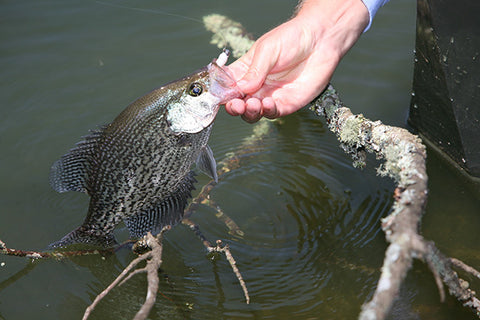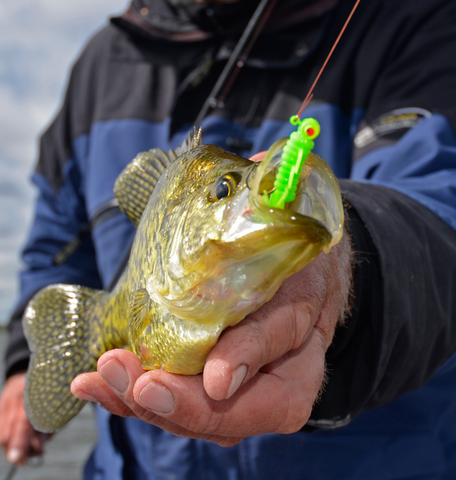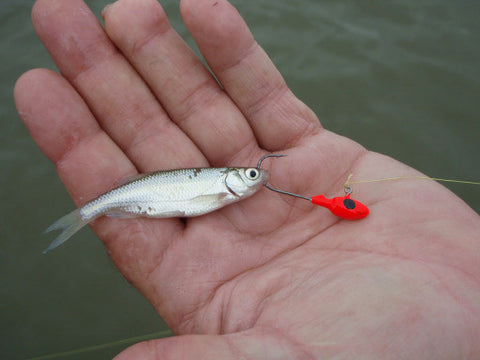
Crappie Fishing: Ultimate Guide for Catching More Crappie
Crappie Fishing; It’s as fun as bass fishing
Crappie fishing is utterly one of the most popular types of fishing done on the lake which is fun, productive, and every angler can attest to the excitement that follows every catch. Crappie fishing offers anglers of all skill levels the opportunity to enjoy fishing and often times catch enough fish for dinner. Every angler can do crappie fishing but those who know the nature, habit, and activities of the crappies have an edge and can enjoy a productive and less stressful fishing.

Georgia Crappie from Game & Fish
The crappie is related to the Sunfish and is found in freshwater bodies like the lakes, ponds, rivers and reservoirs in North America. The fascinating thing about the crappie is that it provides all year round fishing opportunities for anglers who love to eat what they catch. Also, anglers who fish for crappie often catch many crappies at one time because travel in schools and are never alone. The average lifespan of a crappie is about 12 years when in captivity and 10 years in the wild.
Crappie fish species come in two types. White crappie ( Pomoxis annularis) and the black crappie ( Pomoxis nigromaculatus). Both can have a variation in color due to their age and habitat. The white crappie and black crappie can grow up to 19 and 20 inches in length respectively while weighing up to five pounds. Crappie is a favorite game fish for anglers. They spend their day in deeper water and only move at dawn or dusk to feed. Although anglers can embark on crappie fishing and return productive all through the year. Spring appears to be the best time to fish and catch crappies because it is their spawning period. Northern anglers can find these fishes in large concentrations in shallow water bodies during spring because they do not go into hibernation during this time. Once you have located crappies, it is safe to say that crappie fishing requires less skill as compared to other forms of fishing that needs more skill and patience.
What is the difference between the white and black crappie?
• White crappie tolerates murky water more than the black crappie
• White crappie have a more elongated body
• Black crappie have a darker coloration as the name implies
• The dorsal fin in the white crappie is set back further
• The black crappie have about 7-8 visible spines on its dorsal fin
Tips and techniques for crappie fishing
As an angler you have the basic knowledge of how to catch fish. It does not require extensive background about the crappie to get out there and try your luck. Of course, it doesn’t take a pro to catch crappie. Here are few tips and techniques that will help you be more successful while crappie fishing . It should reduce your stress levels and produce more fish.
Use small jigs

Keep your line tight
Use the right fishing knot
Use the best live bait:

Sometimes you need bait to expand your productivity. Although you can catch crappies with just lures, sometimes you just can not beat live bait. Often times this yields better bites and larger fish. One thing to remember when fishing with live bait is the rig you are using is key. A crappie minnow rig should only consist of a hook, sinker and bobber. The hook size will ultimately depend on the size of the minnow/ Smaller minnows generally require hook sizes 6-2 and larger minnows get 1/0 to 2/0. Use an appropriate weight that will keep the bobber about 1/4 of the way above the water. The bobber is just to alert you if a fish is biting. Keep it simple and let the live bait catch the fish.
Vertical Jigging:
This is a useful technique that lets you catch more crappie. Only hang your rod over the boat side or bank of the lake and let the jig drop into the water while hanging below the rod tip. In the beginning you should let this sink to the bottom, reel slowly, let it bounce again and then sit. Do these repeatedly until you get a bite.
Cast and retrieve:
The cast and retrieve technique is perhaps the most dynamic method you can employ in crappie fishing. Cast jigs and crankbaits close to any structure, let it sink to the bottom, then reel slowly and expect a bite. Sunken trees or debris on the bottom often holds crappie. Target these areas over grass or mud bottom.
While crappie fishing is less stressful with the right crappie jigs, tricks and technique, it is also good to understand the effect of temperature changes on crappie fishing. At very low temperatures like 35 degrees, it is very hard to catch the crappie because the water is cold. Crappies go down to the bottom cover and rarely feed. As temperature rise above 50 degrees, crappies begin to become more active, and you can find them at various depths. At about 55 degrees, you will notice more bites because they begin to feed heavily before spawning. With increasing temperature the crappie hang outside the cover and fan out while waiting for the water to get warm. They do this before they get back to the beds. At very hot temperatures like 90 degrees, crappies move out of tributaries and can be found in the shallows on sunken trees or debris.
Crappie fishing is indeed a fun filled activity for both experienced and inexperienced anglers. You can make a great catch without stressing about knowing all the in's and out's of crappie fishing. There are a bunch of anglers who have caught large and unique crappies and you too can be the next in line. You can check the temperature trends and employ these tips to make your crappie fishing enjoyable and not one to forget.
Do not hesitate to contact us at Info@HFDepot.com with any questions you may have. Send us your best Crappie pictures to be featured on our social media and website. Please leave your comments, concerns and opinions below!


Comments
Leave a comment